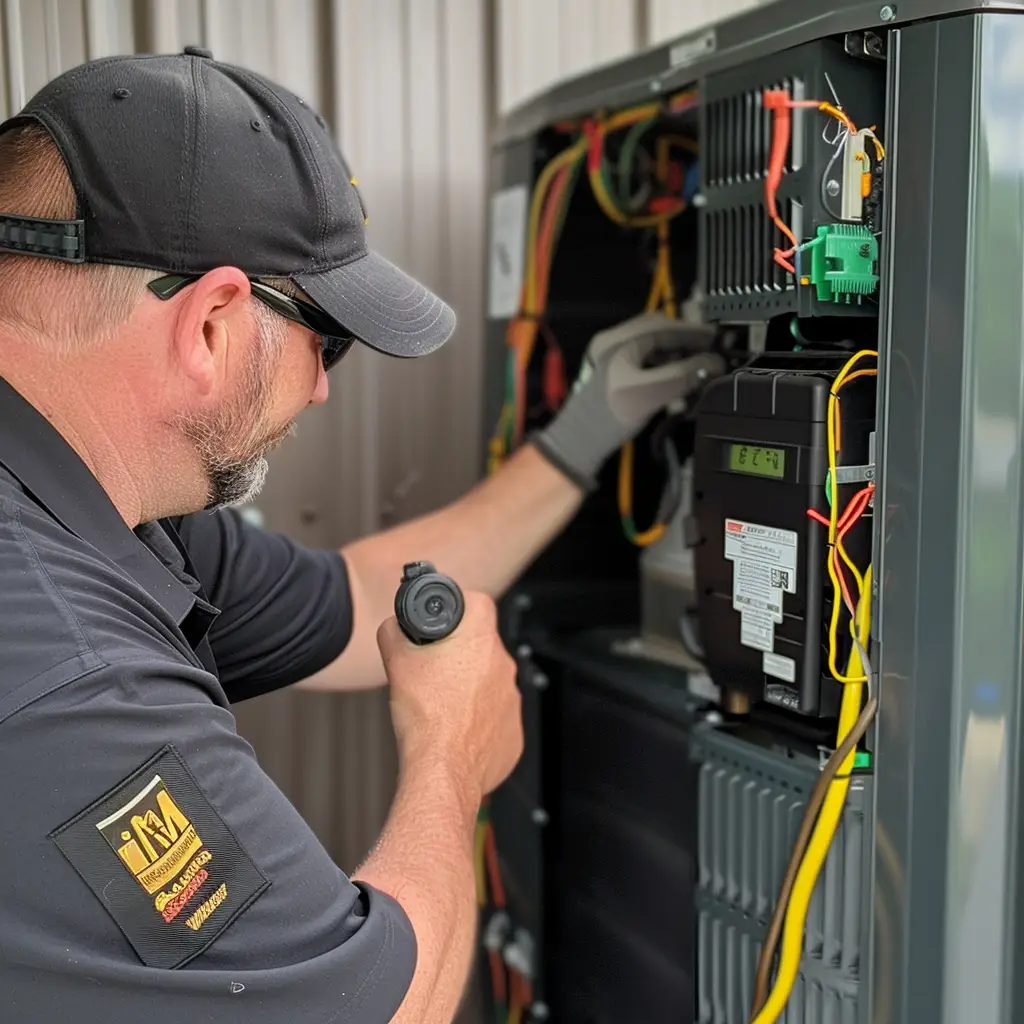You might think the air inside your home is clean and free from pollutants, but the truth is that indoor air can be just as contaminated, if not more so, than outdoor air. In fact, the Environmental Protection Agency (EPA) estimates that indoor air pollution can be 2 to 5 times higher than outdoor levels. This article will explore the importance of indoor air quality, identify common sources of pollution, and provide easy-to-implement strategies to improve the air you breathe inside your home.
Why Indoor Air Quality Matters
Health Impacts
Indoor air quality can have a significant impact on your health. Poor air quality has been linked to various health issues, including allergies, asthma, respiratory infections, and even some types of cancer. By improving the air quality in your home, you can reduce your risk of developing these conditions and promote overall well-being.
Cognitive Function
Research has shown that poor indoor air quality can also negatively affect cognitive function. A study conducted by Harvard University found that participants exposed to higher levels of indoor air pollutants experienced decreased cognitive function compared to those in a cleaner environment. Maintaining good air quality can help improve focus, decision-making, and productivity.
Comfort and Well-being
A comfortable and pleasant living environment contributes to your overall well-being. By improving the air quality in your home, you can reduce unpleasant odors, allergens, and other irritants, making your living space more enjoyable and inviting.
Sources of Indoor Air Pollution
Combustion Sources
Combustion sources, such as gas stoves, fireplaces, and tobacco products, can release harmful pollutants into your home. These pollutants include carbon monoxide, nitrogen dioxide, and particulate matter, which can cause respiratory issues and other health problems.
Building Materials and Furnishings
Some building materials and furnishings, like pressed wood products, carpets, and insulation materials, can emit volatile organic compounds (VOCs) that contribute to poor indoor air quality. VOCs can cause eye, nose, and throat irritation, as well as more serious health effects in some individuals.
Household Cleaning Products
Many cleaning products contain chemicals that can release harmful VOCs into the air. Using these products without proper ventilation can lead to poor air quality and increased health risks.
Outdoor Pollution
Outdoor air pollution, such as traffic-related pollutants, can also infiltrate your home and contribute to poor indoor air quality. This is particularly problematic in urban areas with heavy traffic or in close proximity to industrial facilities.
Strategies to Improve Indoor Air Quality
Ensure Proper Ventilation
One of the simplest and most effective ways to improve indoor air quality is to ensure your home is well-ventilated. Open windows and doors whenever possible to allow fresh air in and pollutants out. Use exhaust fans in kitchens and bathrooms to remove moisture, odors, and pollutants.
Maintain Clean Air Filters
Regularly changing the air filters in your heating, ventilation, and air conditioning (HVAC) system can greatly improve the air quality in your home. Clean filters effectively trap airborne particles and prevent them from circulating throughout your living space.
Control Humidity
High humidity levels can promote mold and mildew growth, which can lead to poor indoor air quality. Keep your home’s humidity levels between 30% and 50% to minimize the risk of mold and mildew. Use dehumidifiers or air conditioners to maintain optimal humidity levels. If you’re experiencing dry air, try using a whole-home humidifier to add moisture in your home.
Use Air Purifiers
Air purifiers can help remove allergens, pollutants, and odors from the air. Choose a purifier with a high-efficiency particulate air (HEPA) filter, which is effective at capturing particles as small as 0.3 microns. This can help reduce allergens like pollen, pet dander, and dust mites.
Keep Your Home Clean
Regular cleaning can help reduce the amount of dust, allergens, and pollutants in your home. Vacuum frequently, and use a vacuum cleaner with a HEPA filter to effectively capture particles. Dust surfaces regularly and wash bed linens and curtains to minimize allergen accumulation.
Choose Safer Products
Opt for cleaning products that are free of harmful chemicals and VOCs. Look for products labeled as “low-VOC” or “green” to minimize the release of pollutants into your home. Additionally, consider using natural alternatives like baking soda, vinegar, and lemon juice for cleaning tasks.
Introduce Indoor Plants
Indoor plants can help improve indoor air quality by absorbing pollutants and releasing oxygen. Some plants, like spider plants, snake plants, and peace lilies, are particularly effective at filtering toxins from the air. Just be sure to research the care requirements and potential toxicity of any plants you introduce, especially if you have children or pets.
Trust AirPoint To Help You Improve Your Indoor Air Quality
Improving indoor air quality is essential for maintaining good health, cognitive function, and overall well-being. By understanding the sources of pollution and implementing the strategies outlined in this article, you can create a healthier and more comfortable living environment for you and your family. At AirPoint, we’re committed to helping you achieve optimal indoor air quality. As a Carrier factory authorized dealer and NATE certified provider in Toronto, our team of skilled technicians, who are fully certified by TSSA, HRAI, and CSA, is ready to assist you in creating a healthier living environment. Our dedication to excellence has earned us the HomeStars Best of the Best 2023 award and 5 stars on Google and HomeStars. Together, we can make your home a sanctuary of clean, fresh air.
For more tips on how to improve indoor air quality in your home, watch this video by Scientific American
Indoor Air Quality FAQs: Answers from the Experts
How often should I change my air filters?
It's generally recommended to change your HVAC air filters every 1-3 months, depending on your system and usage. If you have allergies, pets, or live in a particularly dusty area, you may need to change them more frequently.
Are air purifiers worth the investment?
Air purifiers can be a valuable tool in improving indoor air quality, particularly for individuals with allergies, asthma, or other respiratory issues. When choosing an air purifier, look for one with a HEPA filter for the most effective results.
How can I test my home's indoor air quality?
There are various indoor air quality testing kits and monitors available for purchase that can help you identify specific pollutants in your home. If you're concerned about a specific issue, you can also hire a professional to conduct a thorough assessment.
Can indoor plants really improve air quality?
Yes, indoor plants can contribute to improved air quality by absorbing pollutants and releasing oxygen. While they may not be a complete solution, they can be a helpful addition to other air quality improvement strategies. Be sure to choose plants that are known for their air-purifying abilities, such as spider plants, snake plants, and peace lilies.
How can I reduce VOC emissions from new furniture or building materials?
To reduce VOC emissions from new furniture and building materials, allow them to off-gas in a well-ventilated area, such as a garage or outdoor space, for a few days before bringing them into your home. Additionally, you can choose products made from natural materials or those labeled as low-VOC to minimize the release of harmful chemicals.





